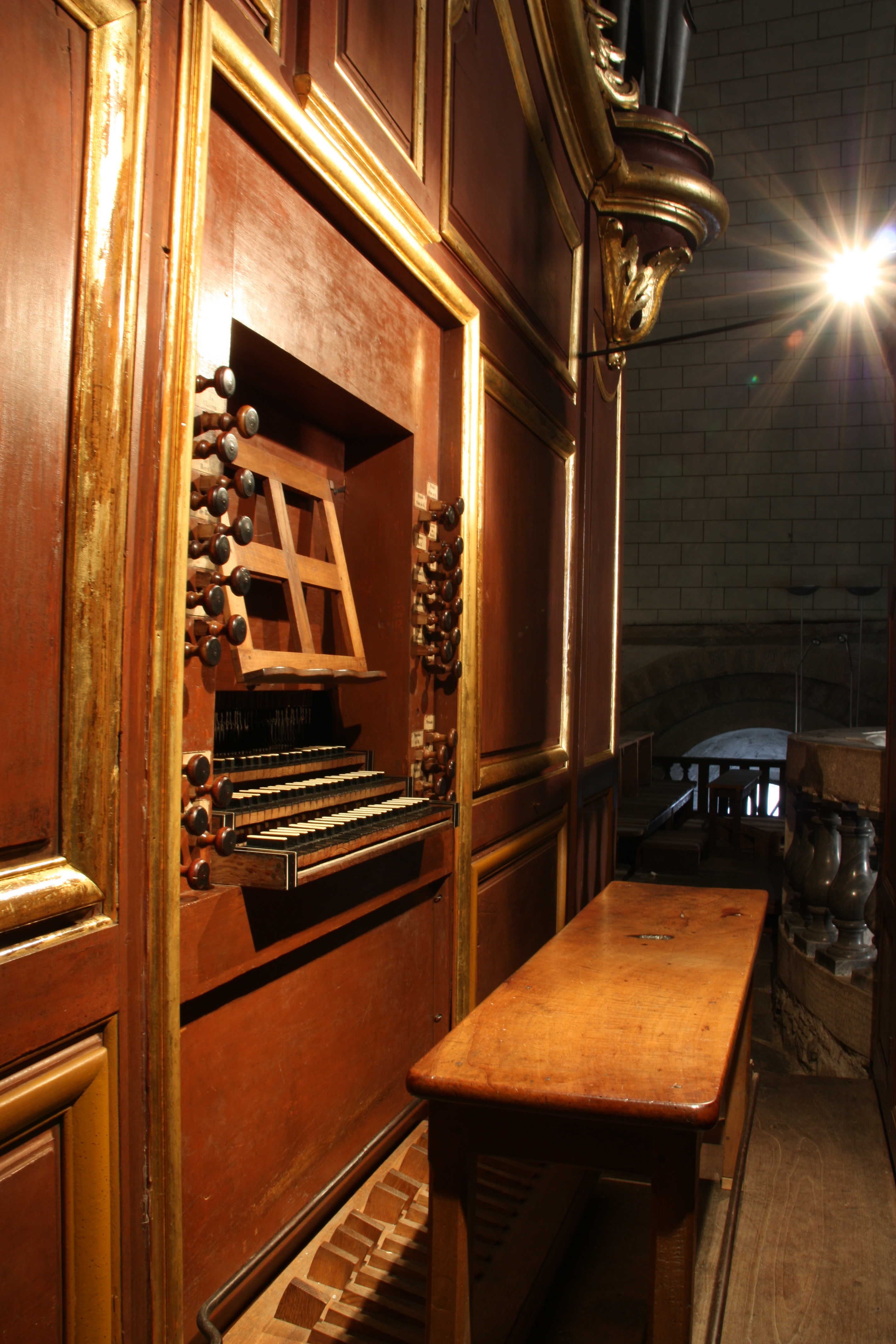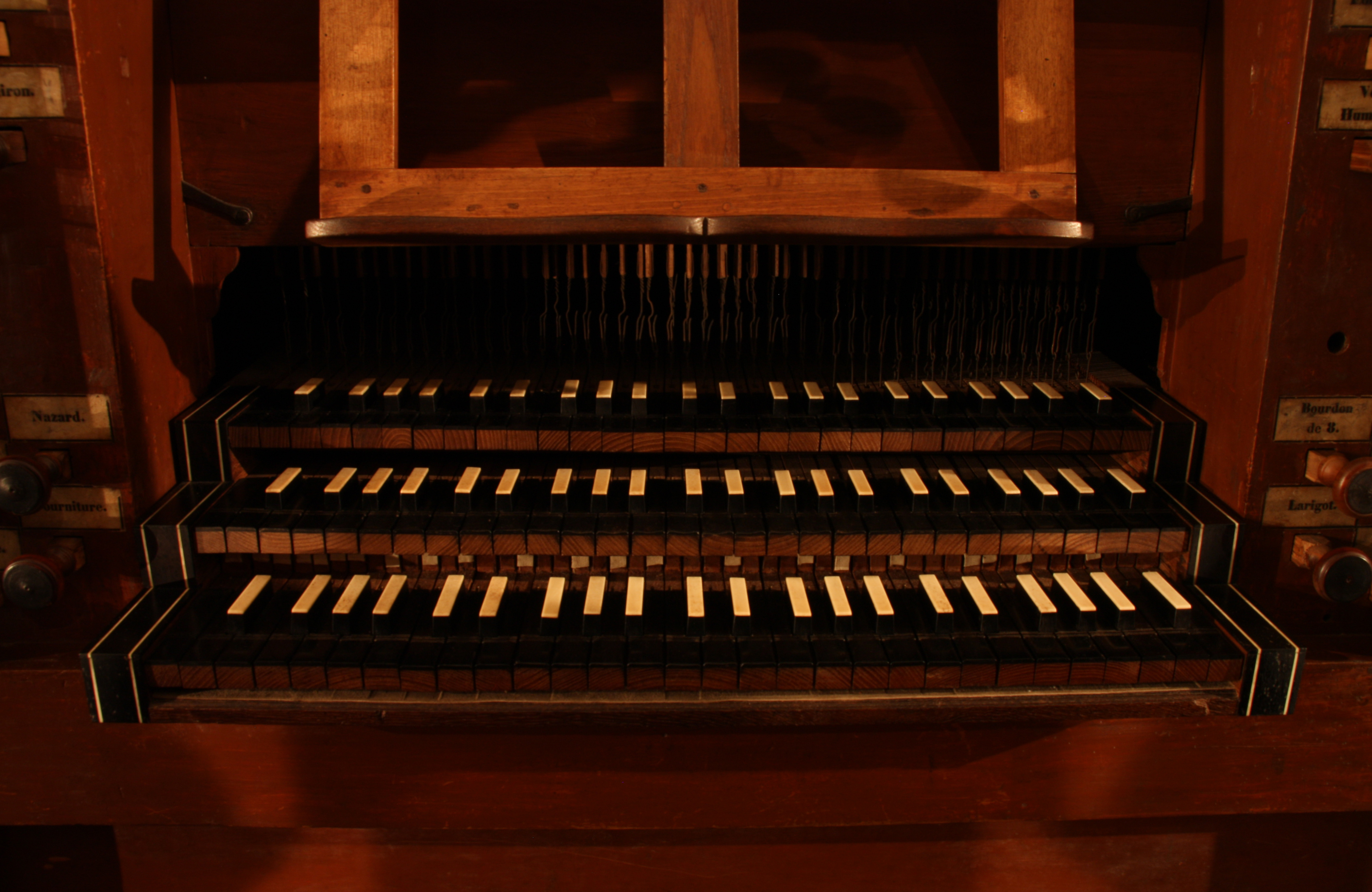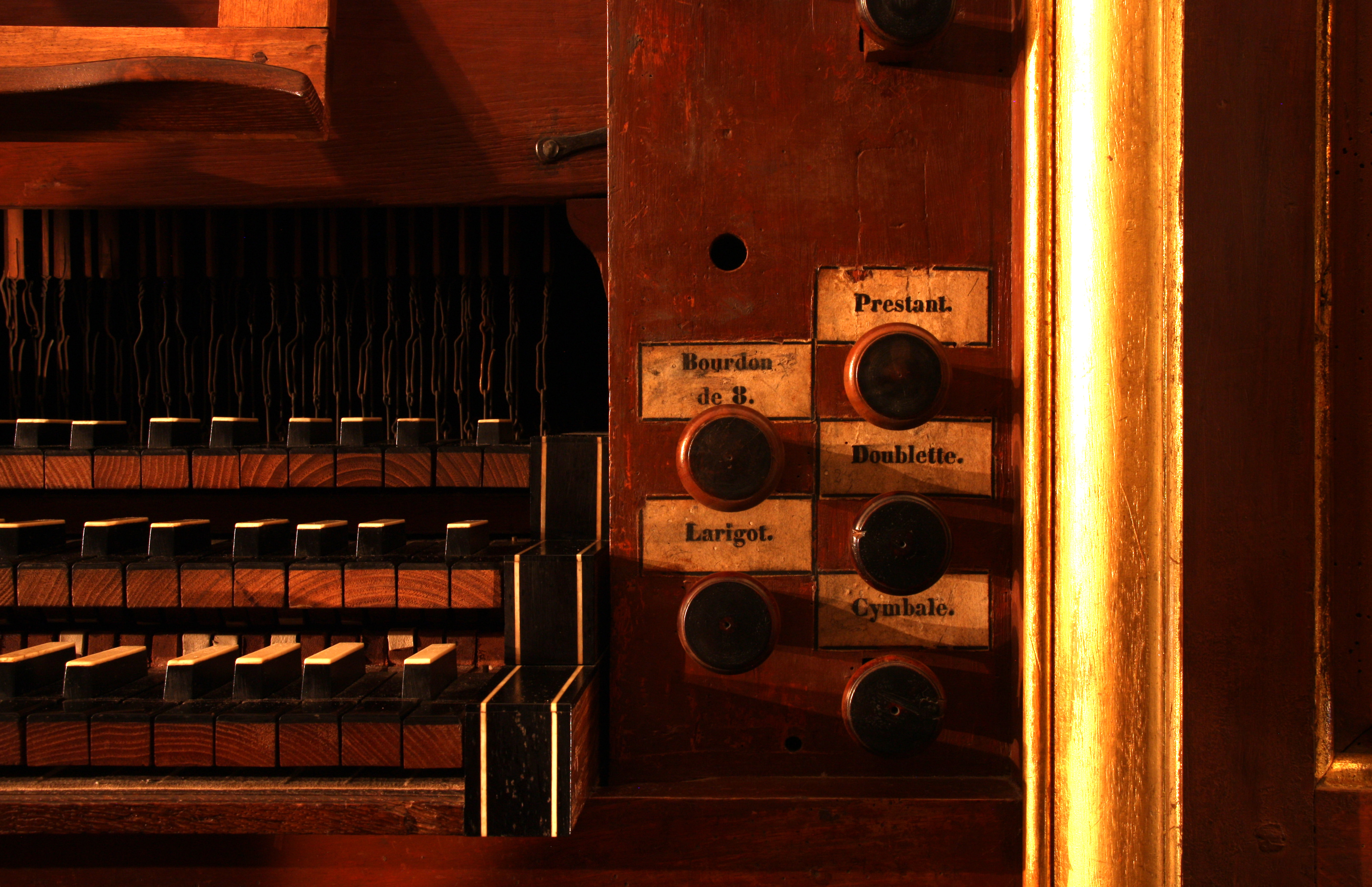Saint-Pons-de-Thomières, Cathédrale Saint-Pons-de-Cimiez
| Builder | J. Micot |
|---|---|
| Year | 1771 |
| Period/Style | Baroque |
| Stops | 30 |
| Keyboards | 3+P |
| Keyaction | tracker/mechanical |
| Sampleset |
Available
 , sampled by
Sonus Paradisi
, sampled by
Sonus Paradisi
|
The organ was constructed by Jean-Baptiste Micot (1712-1784), aided by his son Jean-Baptiste Micot Junior (1740-1815). This instrument belongs to the best preserved organs of acclaimed French organbuilding family.
The organ is located above the main altar of the church on its west side, since the church has lost its original Romanesque shape in the Hugenot wars when the eastern choir was destroyed. When the church was restored in 1711, its traditional liturgical orientation was reversed and the new high altar now occupies the west end of the church, together with the organ.
The old Roman Catholic bishopric merged into the diocese of Montpellier after 1801, and the place lost its importance and most of its funds. As a consequence of poverty, the church and the organ was spared from most innovations of 19th and 20th centuries, so that it could be handed to us in almost intact form.
The organ was altered a little by Clavel in 1830 when the descant of Vox humana was renewed, and then by Puget in 1870 who changed the pitch, but respected the original layout and stop list.
In 1980-1982 Bartélemy and Paul Manuel Formentelli provided the restoration of the instrument to its original state. The care of the organ is now entrusted to Michel Formentelli, who did a major overhaul in 2008, which is well documented on the web pages of the St. Pons organ.
Thanks to the restoration, the organ has the typical sound of an 18th century French instrument and all the French repertoire of the time can be performed in the appropriate style on this organ.
The organ is located above the main altar of the church on its west side, since the church has lost its original Romanesque shape in the Hugenot wars when the eastern choir was destroyed. When the church was restored in 1711, its traditional liturgical orientation was reversed and the new high altar now occupies the west end of the church, together with the organ.
The old Roman Catholic bishopric merged into the diocese of Montpellier after 1801, and the place lost its importance and most of its funds. As a consequence of poverty, the church and the organ was spared from most innovations of 19th and 20th centuries, so that it could be handed to us in almost intact form.
The organ was altered a little by Clavel in 1830 when the descant of Vox humana was renewed, and then by Puget in 1870 who changed the pitch, but respected the original layout and stop list.
In 1980-1982 Bartélemy and Paul Manuel Formentelli provided the restoration of the instrument to its original state. The care of the organ is now entrusted to Michel Formentelli, who did a major overhaul in 2008, which is well documented on the web pages of the St. Pons organ.
Thanks to the restoration, the organ has the typical sound of an 18th century French instrument and all the French repertoire of the time can be performed in the appropriate style on this organ.
| Positif | Grand Orgue | Récit | Pedal |
|---|---|---|---|
| Bourdon 8' | Bourdon-Montre 16' | Cornet V | Flute 8' |
| Prestant 4' | Montre 8' | Trompette 8' | Flute 4' |
| Doublette 2' | Bourdon 8' | Trompette 8' | |
| Fourniture III | Prestant 4' | Clairon 4' | |
| Cymbale II | Doublette 2' | ||
| Flute 4'-8' | Fourniture IV | ||
| Nazard 2 2/3' | Cymbale III | ||
| Tierce 1 3/5' | Nazard 2 2/3' | ||
| Larigot 1 1/3' | Quarte de Nazard 2' | ||
| Cromorne 8' | Tierce 1 3/5' | ||
| Grand Cornet V | |||
| Trompette 8' | |||
| Clairon 4' | |||
| Voix Humaine 8' |
1549895560-Cl rambault
0:00
0:00
1549386885-Hauptwerk recording 2019-02-04-21-59-16 StPonsSurr Main output
0:00
0:00
1549499539-Hauptwerk recording 2019-02-05-15-58-23 StPonsSurr Main output
0:00
0:00
https://www.sonusparadisi.cz/en/organs/france/st-pons-en-thomieres-orgue-micot.html
 Pipe Organ Map
Pipe Organ Map




